Look, we know you’re probably not going to try to jump the Grand Canyon, and the odds of you needing to outrun an erupting volcano are pretty slim, but you still have to know how fast an ATV can go.
Being extraordinarily fast is a point of pride, and insane speeds are the ultimate adrenaline rush. So whether you’re getting chased by a bear, chasing down bandits, or just enjoying your weekend trail ride, ATV speed matters most.
But not all four wheelers are created equal. The max speed of ATVs varies depending on engine size, configuration, and a number of other factors. Let’s take a look.
Comparing Top Speed of Various ATV Engine Sizes (Stock)Your engine size is your biggest ATV speed limiter. Smaller engines go slower, bigger engines go faster. Simple right?
Not quite. As you’ll see, every vehicle has a speed limiter installed that artificially limits your ATV’s top speed.
Let’s go through some of the most common engines.
The 110cc ATV’s are designed to be youth models. They’re built for kids 10 and up. As such, their speed is limited to 30 MPH. The engine can theoretically reach higher speeds, but the ECU keeps it from going over 30.
Now we get to the group of engines that don’t hit their speed limiters. Most 450cc engines top out around 55 MPH. That’s plenty fast for a modest engine like this. You won’t hit this speed often either—just on the flat-out straightaways.
A 570cc engine gets another 10 MPH over the 450. If you’re looking for some real nail-biting ATV speed, this will get you there.
Now we’re getting into the blisteringly fast range. These engines do tend to hit their on-board ATV speed limiter of 75 MPH. But when you’re going that fast, it doesn’t really matter. With a max speed this high, you’ll be hitting speeds of 40–50 MPH regularly on trails.
With 700cc of displacement, this ATV can put out a lot of power. If speed is what you’re after, this quad will give it to you… at least until you hit the built-in rev limiter at around 75 MPH.
If speed is what you’re after, this quad will give it to you… at least until you hit the built-in rev limiter at around 75 MPH.For the fastest ATV top speed, you need to go with a quad rocking a 1000cc engine. With a limiter raised to 80 MPH, it stands to reason that if you want to go fast, there’s nothing better than a 1000cc ATV.
They jump off the line and get to high cruising speeds in no time at all. That kind of speed and acceleration makes for some hair raising trail rides and gives you the ultimate adrenaline rush.
Is It Possible to Limit the Speed of an ATV?There are many factors that can limit the speed of an ATV. Some of them can be easily controlled by you, others cannot. Whether you want to slow down for a calmer ride or not, these are the ATV speed limiters that you need to look out for.
Weight is the single biggest factor that can slow you down inadvertently. The weight of everything on your ATV from your bumper to your backpack will slow you down.
Take a look at what you bring with you on your ride. When we’re out on remote trails, we regularly pack on 30 to 50 pounds of supplies too. We pack a back with tools and small spare parts. We strap on a cooler filled with drinks, lunch, and snacks. We even keep a big water bottle in our backpack.
Combine that with bulky jackets, boots, and pants if it’s cold out (not to mention a few pounds of our own winter weight), and all of a sudden our ATV speed is much lower than it was before.
Just wait until you get caked with mud too.
A big bumper like this offers excellent protection but can slow you down. You have to consider the tradeoff when adding any weight to your vehicle. Is the protection worth losing a few MPH of your ATV’s top speed? Usually the answer is yes, but if speed is you’re only goal, you might reconsider.It’s fun and practical to load up your machine with better bumpers, mirrors, and protection, but that can weigh you down, too.
Aftermarket bumpers tend to be heavy-duty and just plain heavy. They’re great for keeping your ATV in one piece but will slow you down.
If you go further and add a big lift kit or a windshield, that will slow you down as well.
Bigger tires have a strange effect on your top speed. If you make no other changes, a larger diameter tire will act as a high gear kit.
What that means is technically, a larger tire will increase your ATV top speed. However, the increase in rotating mass and decrease in torque will outweigh any theoretical speed increase you get.
Big tires will slow you down and have a negative impact on acceleration without a gear reduction.
A gear reduction is a great way to slow down your machine and turn some of your engine’s power into torque.
Typically, gear reductions install in your transmission (or are part of GDP Portal Gear Lifts) and they boost torque and power. They also bring your top speed down by a small amount.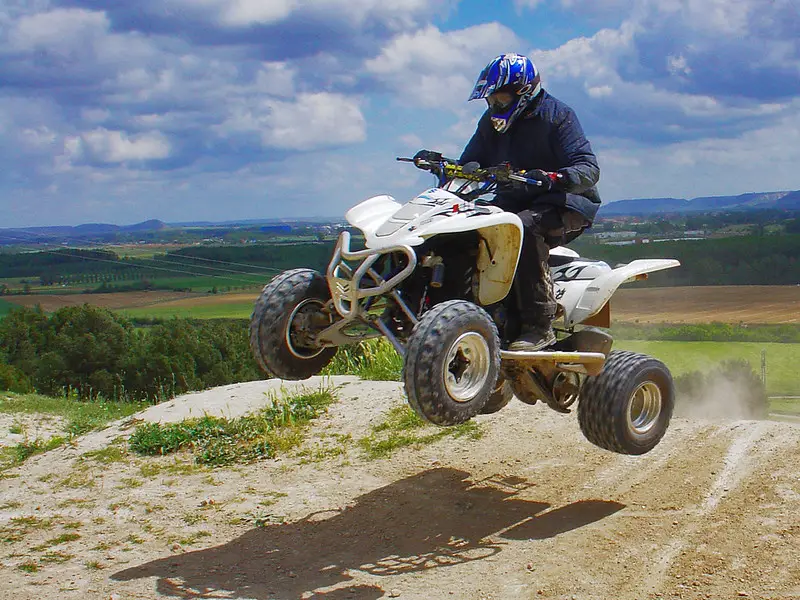 Depending on your gear reduction, you might end up lowering your ATV’s top speed by 10–15%.
Depending on your gear reduction, you might end up lowering your ATV’s top speed by 10–15%.
It’s a win-win if you want to slow your ride a bit.
How to Increase Top ATV SpeedIncreasing your ATV’s top speed is a bit trickier, but there are a few tried and true methods.
The same way that adding weight slows you down, shedding weight can speed you up.
If you’re craving hitting your ATV’s max speed, leave the cooler at home and pack lightly. And when you’re planning upgrades, pay attention to the weight of your bumpers and tires. If you manage to keep your total weight at or below stock, you’ll be flying.
Plus, losing weight is free.
This Sportsman is running stock with no extra weight added. It’ll go just as fast as the manufacturer intended. Installing bigger tires, bumpers, and a cooler can reduce this ATV’s max speed dramatically. If speed is your #1 concern, keep it light!A high gear kit is the opposite of a gear reduction.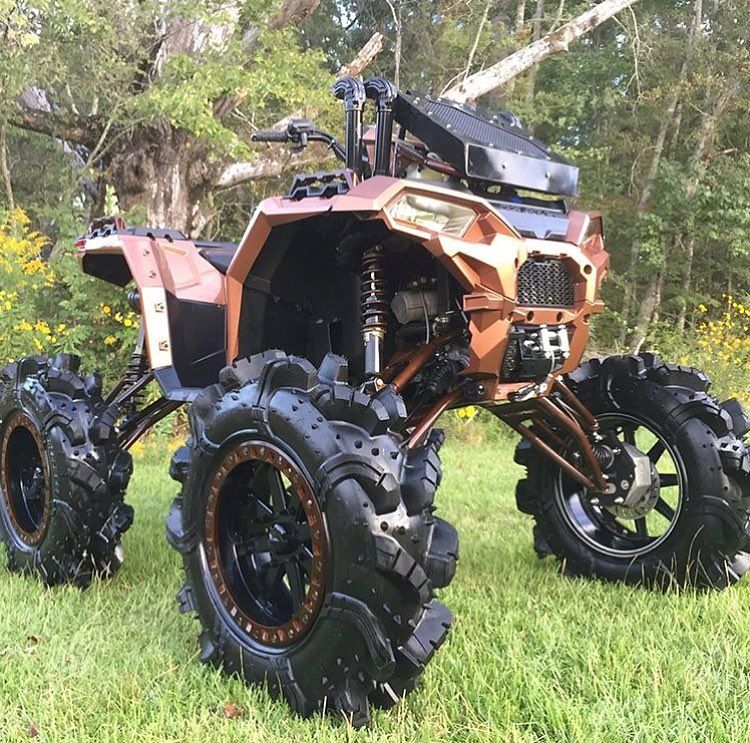 Instead of giving you more torque, it reduces torque and boosts speed.
Instead of giving you more torque, it reduces torque and boosts speed.
It’s a great way to increase your top ATV speed, but it does make your machine more sensitive to weight. You’ve got to keep it light to burn rubber with a high gear kit.
Larger tires are a no-go with a high gear kit, too. You’d basically have two high gear sets working together and reducing torque so much that you’d only hit your top speed in a salt flat somewhere. Not ideal.
A clutch kit is a great way to eek out extra performance from your ATV’s engine. Clutch kits are designed to optimize your RPM curve so that you’re getting your maximum horsepower for as long as possible as you throttle down. A proper clutch kit can increase your acceleration and top speed.
With a carefully tuned acceleration curve, you’ll have the fastest ATV possible.
Whether you need to make big changes or small, your ATV speed is in your control. Get tweaking, get riding, and see how fast your ATV can go.
Today’s most powerful sports and utility ATVs can reach top speeds of 80mph (128km/h). Moderate sized bikes averages at about 65 mph (104km/h). Youth ATVs have speed limiters so that the parent can decide exactly how fast it can go.
Table of Contents
The world record for the fastest speed on an ATV was recorded in 2008 by Terry Wilmeth of Oregon. He reached his top speed of 196.19 miles per hour on a Yamaha 700 Raptor, which was modified using a hybrid rocket thruster.
– Arctic Cat Thundercat 1000.
– Can Am Outlander X XC 1000.
– Suzuki LT500 (quadzilla)
– Yamaha Raptor 700R.
– Honda TRX 700xx.
– Bombardier DS650.
– KTM 525 XC.
– Yamaha YZF 450R.
80kph
– Put in a K&N filter. This type of air filter gives good air flow and is designed to increase acceleration on the ATV. …
This type of air filter gives good air flow and is designed to increase acceleration on the ATV. …
– Put on four new tires. The size will depend on the size of the ATV. …
– Get a new AA exhaust pipe. …
– Change the gear ratio by adding or decreasing sprocket size on the ATV. …
– Purchase a big bore kit.
80kph
cc ATV Side by Side
— —— ————
200 40 MPH –
250 50 MPH –
300 53 MPH –
350 55 MPH –
The quadzilla is faster than the banshee in stock form. The banshee with even just a pipe kit really wakes up and is really fast. There is also many more mods available for the banshee than the LT.
80kph
40mph
stock for stock- Yfz450 beats a banshee buy about . 3-. 4 10th of a second. piped for piped- yfz450 still beats the banshee by about the same however many mods can be done to the banshee to make it faster than a Yfz at a more reasonable price.
3-. 4 10th of a second. piped for piped- yfz450 still beats the banshee by about the same however many mods can be done to the banshee to make it faster than a Yfz at a more reasonable price.
Grizzly 660 H.P. and Speed??? The Griz will hit 60 , reports of 65 mph.
40mph
Today’s most powerful sports and utility ATVs can reach top speeds of 80mph (128km/h). Moderate sized bikes averages at about 65 mph (104km/h).
cc ATV Side by Side
— —— ————
150 35 MPH 15 to 30 MPH
200 40 MPH –
250 50 MPH –
300 53 MPH –
Q: How fast can ATVs go? Today’s most powerful sports and utility ATVs can reach top speeds of 80mph (128km/h). Moderate sized bikes averages at about 65 mph (104km/h). Youth ATVs have speed limiters so that the parent can decide exactly how fast it can go.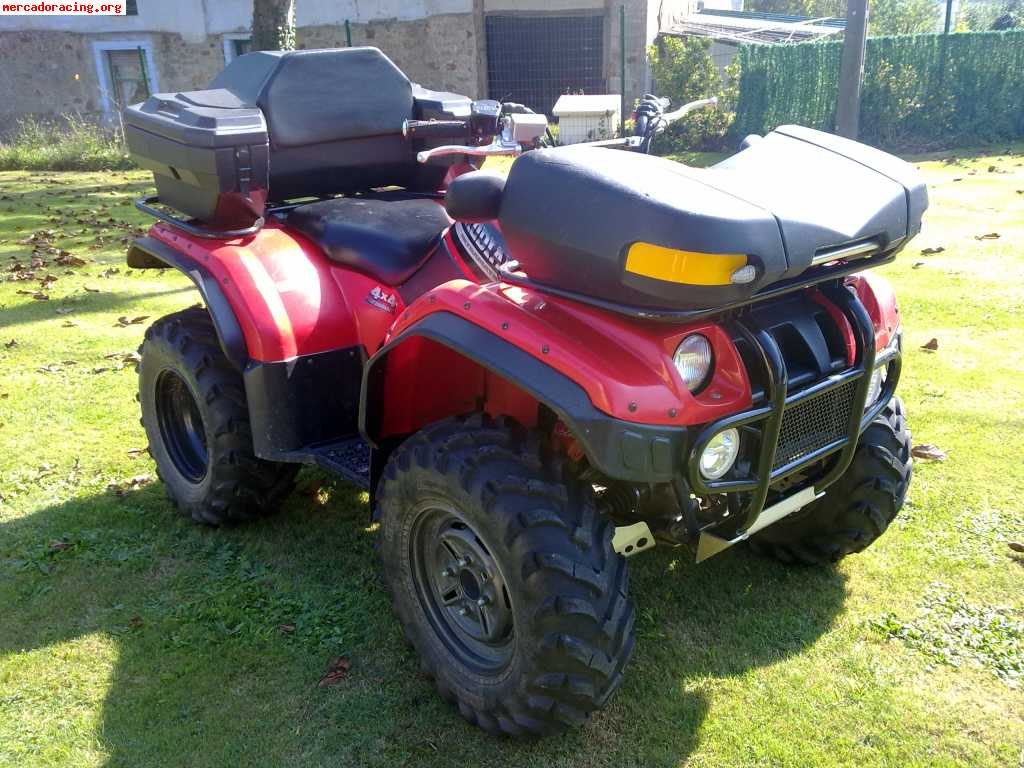
If you are just planning on using the ATV for general riding around your property or easy trail rides, 550 cc or under is going to be plenty big enough. If you are going to be doing more aggressive trail riding, steeper hill climbing, or some towing and hauling, you will probably want to be in the 500 -700 cc range.
cc ATV Side by Side
— —— ————
200 40 MPH –
250 50 MPH –
300 53 MPH –
350 55 MPH –
about 45 to 53 mph
Citations:
https://www.motorbiscuit.com/the-fastest-atv-ever-clocked-in-just-under-200-mph/#:~:text=The%20world%20record%20for%20the,using%20a%20hybrid%20rocket%20thruster.
https://atvhelper.com/top-10-fastest-atvs-from-the-factory-fastest-stock-atv/
https://www.globalsources.com/si/AS/Toptom-International/6008825020400/pdtl/ATV/1002829979.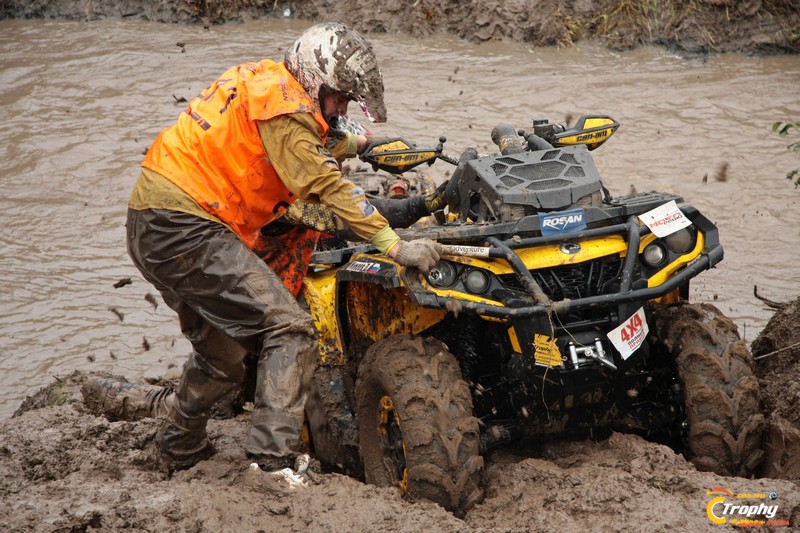 htm
htm
https://itstillruns.com/make-atv-faster-4622480.html
https://www.globalsources.com/si/AS/Toptom-International/6008825020400/pdtl/ATV/1002829979.htm
https://goodmuddin.com/top-speed-atvs-utvs/
https://atvconnection.com/forums/suzuki/120635-how-much-faster-quadzilla-s-than-banshee-s.html#:~:text=The%20quadzilla%20is%20faster%20than,the%20banshee%20than%20the%20LT.
https://www.globalsources.com/si/AS/Toptom-International/6008825020400/pdtl/ATV/1002829979.htm
https://www.reddit.com/r/ATV/comments/c3iwha/is_150cc_atv_good_enough_for_80kg_how_fast_will/#:~:text=A%20150cc%20will%20get%20you%20close%20to%2040mph.
https://www.yfzcentral.com/threads/yfz-450-vs-banshee-350.26690/#:~:text=stock%20for%20stock%2D%20Yfz450%20beats,at%20a%20more%20reasonable%20price.
https://atvconnection.com/forums/yamaha/238609-grizzly-660-h-p-speed.html#:~:text=07%3A43%20PM-,Grizzly%20660%20H.P.%20and%20Speed%3F%3F%3F,60%20%2C%20reports%20of%2065%20mph.
https://www. reddit.com/r/ATV/comments/c3iwha/is_150cc_atv_good_enough_for_80kg_how_fast_will/#:~:text=A%20150cc%20will%20get%20you%20close%20to%2040mph.
reddit.com/r/ATV/comments/c3iwha/is_150cc_atv_good_enough_for_80kg_how_fast_will/#:~:text=A%20150cc%20will%20get%20you%20close%20to%2040mph.
https://boostatv.com/top-speed/#:~:text=Today’s%20most%20powerful%20sports%20and,mph%20(104km%2Fh).
https://goodmuddin.com/top-speed-atvs-utvs/
https://boostatv.com/top-speed/#:~:text=Q%3A%20How%20fast%20can%20ATVs,how%20fast%20it%20can%20go.
https://atvman.com/what-size-atv-to-buy/#:~:text=If%20you%20are%20just%20planning,the%20500%20%2D700%20cc%20range.
https://goodmuddin.com/top-speed-atvs-utvs/
https://www.trackeroffroad.com/learning-center/how-fast-will-it-go.html#:~:text=We%20found%20the%20speed%20ranged%20from%20about%2045%20to%2053%20mph.
You agree that the maximum speed will be limited for safety reasons
ATVs must be operated by persons over 16 years of age.
The total load on the ATV must not exceed 150 kg.
While driving, the driver must firmly hold on to the steering wheel, the passenger on the special handles.
When cornering, move (tilt) the body in the direction of the turn.
When tilting the ATV, move (tilt) the body in the direction opposite to the slope.
Always keep your feet on the footrests when moving, even when leaning over.
We provide a free instruction on how to drive the ATV before you start using it.
If you notice fluid leaks and/or other problems, stop the engine immediately and notify your instructor.
If you detect the operation of warning signs on the instrument panel (during the initial briefing, you will be shown control devices that you should pay attention to throughout the trip), immediately turn off the engine and inform the instructor.
Before and after the rental, the ATV is checked in your presence for breakdowns and damages, after which the acceptance certificate is signed.
Ride on a quad bike, always wearing helmets only, protective suits are provided free of charge on request.
In the event of a breakdown or accident, inform the instructor or contact him by phone.
If the ATV is damaged due to your fault, you pay for the cost of repairs and spare parts.
The time spent during the trip to fix problems that occurred through your fault is not compensated.
ATV must be instructed before use;
You agree to follow the speed limit set by the guide (instructor).
Do not succumb to the provocations of other citizens to participate in the race; clashes and other actions that can directly or indirectly cause damage to property and citizens;
Do not interfere with your actions or omissions to comply with these rules.
Drive onto highways and other public roads.
To tow other ATVs, or any other vehicles.
Leave ATV unattended.
Crossing deep water obstacles, driving over fires and areas with smoke or open flames is prohibited.
Gear shifting without stopping the machinery.
Drunk or drugged ATV riding.
Intentional collision with other ATVs.
Intentional collision with obstacles.
Provoking others to collide.
Overtake the instructor and the ATVs in front.
Deliberately fall behind the convoy and then overtake the convoy at high speed.
Do not follow the instructions of the instructor.
Touch moving parts such as wheels, drive shafts, variator pulleys, etc.
Talk aggressively, use profanity, and do anything that might disturb the people around you.
• Do not operate the ATV without a properly sized crash helmet.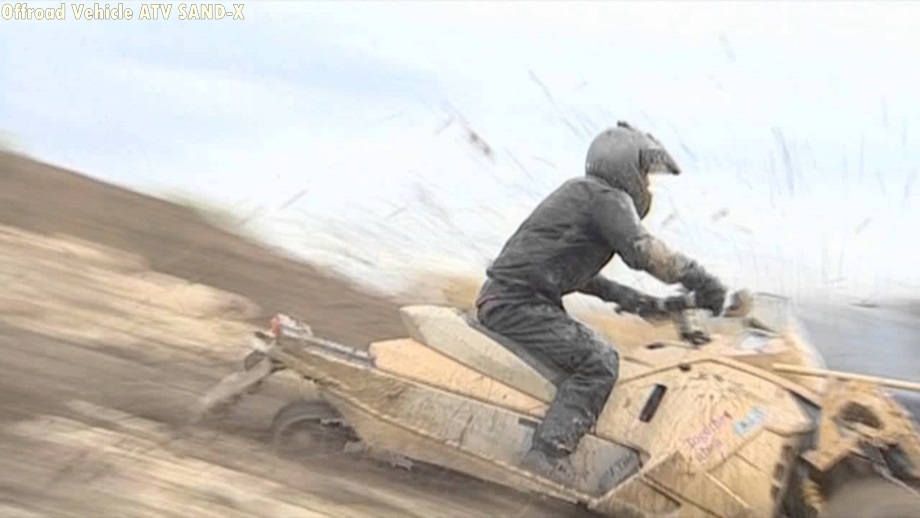 It is also necessary to wear eye protection, (protective mask or goggles).
It is also necessary to wear eye protection, (protective mask or goggles).
• Do not consume alcohol or drugs before or while operating an ATV.
• Always follow the instructions and follow the Instructor's recommendations.
• Before each use, make sure the ATV is in good condition and safe to ride. Always follow the rules and recommendations for driving given in the instruction.
• Always use extreme caution and drive slowly when driving in unfamiliar terrain.
• Always keep both hands on the handlebars and both feet on the footrests while riding the ATV.
• Do not operate the ATV on uneven, slippery, damaged roads until you have learned and gained the practical skills necessary to control the ATV on such roads. Always be extremely careful when driving in such conditions.
• Do not operate the ATV on slopes that are too steep for the vehicle and for your experience. Practice on small descents before moving on to difficult ones.
• Always follow the appropriate instructions from the Instructor when entering the hill, check the road surface first, never enter the hill on a road that is too slippery or has a damaged surface. Shift your weight forward of the ATV, never suddenly open the throttle or change gears suddenly. Never drive up a hill at high speed.
Shift your weight forward of the ATV, never suddenly open the throttle or change gears suddenly. Never drive up a hill at high speed.
• Always follow the appropriate instructions from the Instructor when descending and braking on the hill. Inspect the road carefully before descending. Shift your weight back, never go down a hill at high speed. Avoid going downhill at an angle that could cause the ATV to lean to the side. Go straight down if possible.
• Always follow the appropriate Instructor's instructions for crossing inclines. Avoid slides on excessively slippery or damaged surfaces. Shift your weight to the side of the lift. Never turn the ATV around on a hill until you have mastered the turning technique. On level ground, avoid crossing steep hills whenever possible.
• To prevent the engine from stalling and the vehicle from reversing when entering a hill, use the appropriate gear and maintain a steady speed. If the engine stalls or the vehicle reverses, follow the Instructor's specific instructions.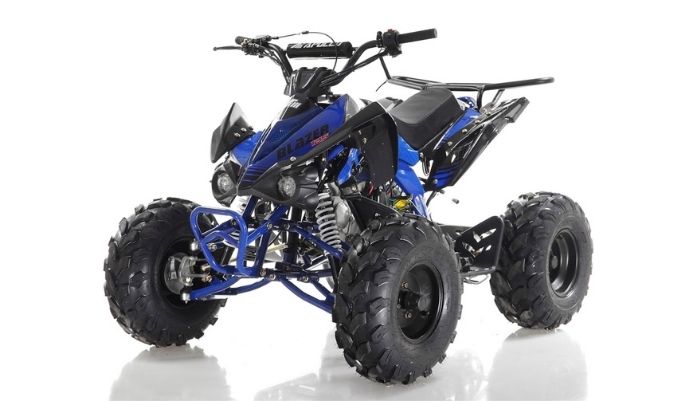
• Always check for obstacles in the road before operating the ATV in unfamiliar terrain. Never try to overcome large obstacles on the ATV, such as large rocks or fallen trees. Always follow the Instructor's specific instructions for overcoming obstacles.
• Be careful when skidding or skidding when practicing at low speed on a flat, smooth road. On extremely slippery surfaces such as ice, drive slowly and be very careful to reduce the risk of slipping or skidding.
• Start decelerating some time before stopping.
• Be aware that wet brakes reduce stopping power. Check your brakes after getting out of the water, if necessary, wait a while for the pads to dry out.
• Always be sure there are no obstacles or people behind you when you turn.
• Never exceed the ATV's stated load capacity. The load must be properly placed and securely attached.
• Never start the engine on a slope, as this may cause damage.
• Observe age guidelines: children under 16 are not allowed to operate an ATV.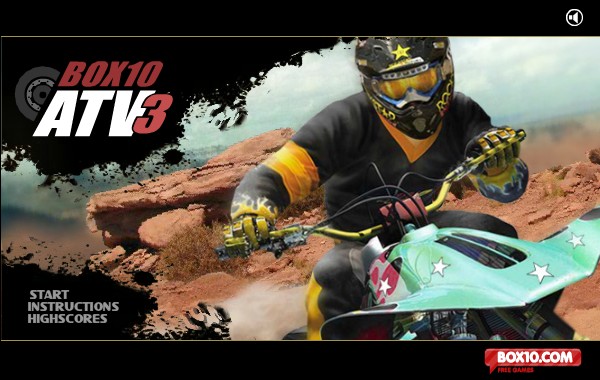 Do not allow a person who does not know how to operate the ATV in a safe manner to operate the ATV.
Do not allow a person who does not know how to operate the ATV in a safe manner to operate the ATV.
• Avoid riding the ATV on paved roads, including driveways, sidewalks, streets and car parks.
• If you need to stop (frozen helmet glass, hands, etc.) do not wait for the group to stop. Raise your left hand up (stop signal for ATVs following you) and gently come to a stop.
The instructor has the right to stop the tour early in case of violation of these rules!!!
To prevent ATV riding from ending up in a long hospital room:
Do not drive too fast. A four-wheel drive ATV is not a car or a motorcycle. It doesn't respond as well to the driver as a car, it can't lean quickly into a corner like a motorcycle. Remember that when riding an ATV it is very easy to roll over on level ground or even crash into a tree at full speed. For example, if a stump comes across in a field under tall grass, the ATV can run into it, and then the rider will fly over the steering wheel, or at least hit it.
Never ride an ATV alone. It is best to ride with someone in a pair on two ATVs. There are a lot of situations when a partner is needed. For example, it is very difficult to put an overturned ATV on wheels, and if it covered you from above, then you won’t even be able to get out from under it alone. The second ATV can pull the first one out of the swamp or tow it to the camp in case of a breakdown.
When passing a difficult obstacle, it is better to get out of the saddle and, carefully working with the brake and accelerator, walk alongside. You should also not go too deep into the water - you can fill the motor.
Place both feet straight on the footrests and hands on the controls.
Start the engine, let it warm up. After that, holding the brake, engage the gear.
Select direction of travel.
Release the brake and slowly press the throttle with your right thumb to start moving. The speed of movement depends on how far the damper is open.
The speed of movement depends on how far the damper is open.
For starters, don't try to drive fast. It is better to learn how to maneuver, handle the brake system and throttle on level ground.
Turn the steering wheel in the desired direction. Tilt your upper body inward and rest your weight on the outside footboard. This will change the balance of traction between the wheels, and the turn will be made smoothly. Turns back are performed in the same way.
ATTENTION!!! ATVs are not designed to make sharp turns or turns at high speed!
When entering a slippery surface, slow down.
Avoid sharp and sharp turns, or the ATV will skid.
When skidding, turn the steering wheel in the direction of the skid and shift your body weight forward. Never slow down during a skid.
An all-wheel drive system can make driving on slippery surfaces much easier.
Climb up in a straight path.
ATVs are not designed for climbing steep hills (over 25°).
When lifting, keep both feet on the footrests and shift your body weight forward.
Drive at a steady speed with the throttle open.
When ascending, be fully prepared for an emergency.
If the ATV has completely lost forward speed, raise yourself up and apply the front brake. If there is a complete stop, apply the rear brake as well, and then set the gear selector to park.
If the machine rolls backward, it is necessary to get up and apply the front brake. After a complete stop, you can also apply the rear brake and move the gear selector to park mode.
ATTENTION!!! Crossing hills on an ATV is very dangerous! If possible, try to avoid hills when riding an ATV.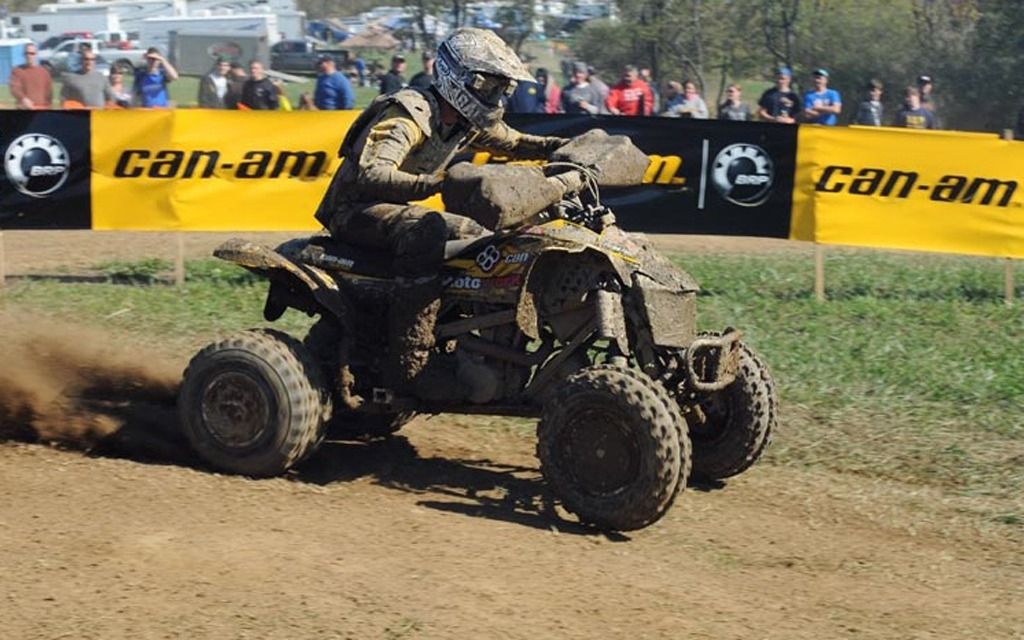 Any incorrect action while crossing a hill can cause serious injury, or even death!!!
Any incorrect action while crossing a hill can cause serious injury, or even death!!!
If you still need to cross a hill with an ATV, please follow these rules:
Drive at low speed.
Tilt your torso towards the hill to transfer the weight of your upper body towards the slope. But be sure to keep your feet on the footboards.
In order not to lose direction, the machine must be steered slightly uphill.
If the ATV begins to tip over, quickly turn the front wheel downhill or leave the vehicle immediately.
When descending a slope, you need:
Move in a straight line.
Shift your body weight to the rear of the machine.
Drive at a slow speed, applying the brakes lightly.
Know how to operate the rear auxiliary brake lever.
If the machine stalls while lifting, do not let it roll down.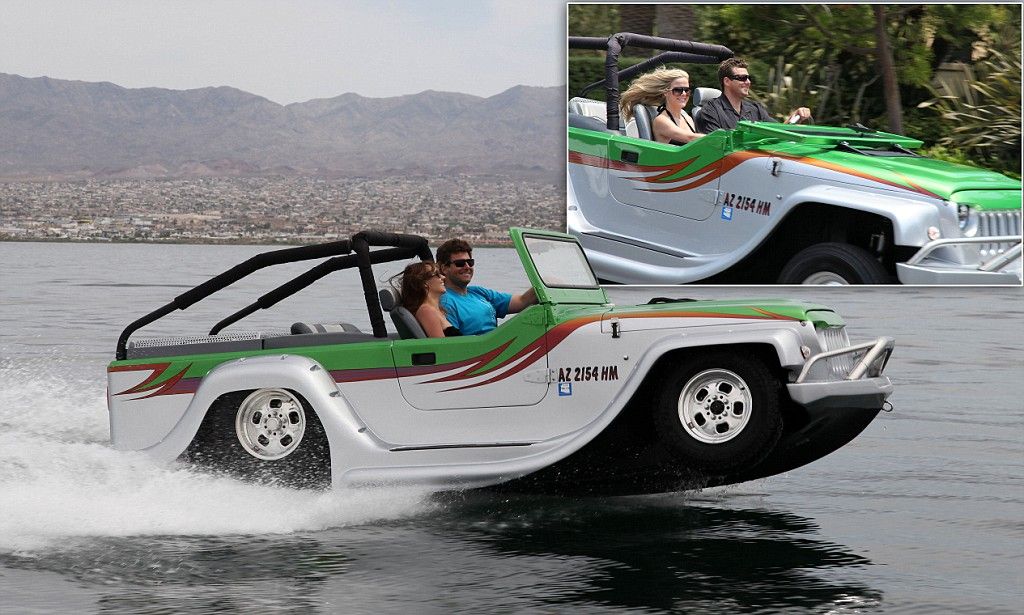 Do the following:
Do the following:
Stop and put the gear selector in park mode, raise yourself up.
Turn off the engine.
Get off the ATV on the side that is on top. If the ATV is pointing up in a straight line, then you need to get off on the left.
Stand at the top of the machine and turn the steering wheel fully to the left.
While holding the brake lever, place the shifter in first gear and allow the ATV to circle slowly to the right until the vehicle is across the slope or turns slightly down.
Shift the shifter into park and sit back on the ATV from the top side while supporting your body weight.
While holding the brake lever, start the engine while shifting the gear selector to first gear.
After releasing the brake, drive slowly until the ATV is on level ground. Control the speed with the brake.
You can cross shallow water on your ATV (the depth should not exceed the level of the footrests). The following rules must be observed:
The following rules must be observed:
Before entering the water, assess the depth and speed of the current.
It is necessary to move the reservoir in the place where there is a gentle descent to the water.
Move slowly, avoiding rocks and other obstacles.
Dry the brakes after driving over water. To do this, lightly press the lever until the brakes start working correctly again.
Posted Updated ATV3
Contents
Many drivers have a question where they can ride an ATV.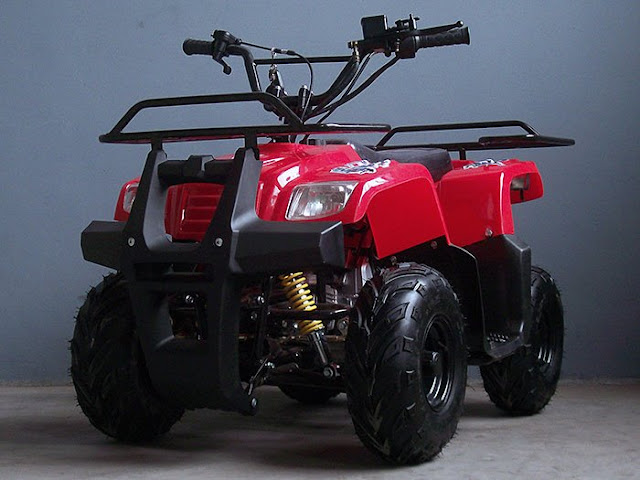 This vehicle is designed for extreme off-road driving. Dirt, swamp, bad road - this is his element. However, is it possible to ride an ATV on PDO (public roads), for example, in the city? On the one hand, the manufacturer's instructions for many models say that this vehicle is not intended for such operation. On the other hand, the law does not prohibit it.
This vehicle is designed for extreme off-road driving. Dirt, swamp, bad road - this is his element. However, is it possible to ride an ATV on PDO (public roads), for example, in the city? On the one hand, the manufacturer's instructions for many models say that this vehicle is not intended for such operation. On the other hand, the law does not prohibit it.
Quad bikes are more commonly used on public roads. Find out the difference between a quad bike and a quad bike.
There are no strict restrictions for movement on the streets of Russian cities or public roads for an ATV. But for this you need to fulfill a number of requirements. ATVs are more designed for riding on rough terrain, so if used improperly, such vehicles can quickly fail.
In the rules of the road, riding an ATV on public roads is not prohibited, since there is generally little said about such vehicles. Regulations relating to this motorcycle have not yet been fixed.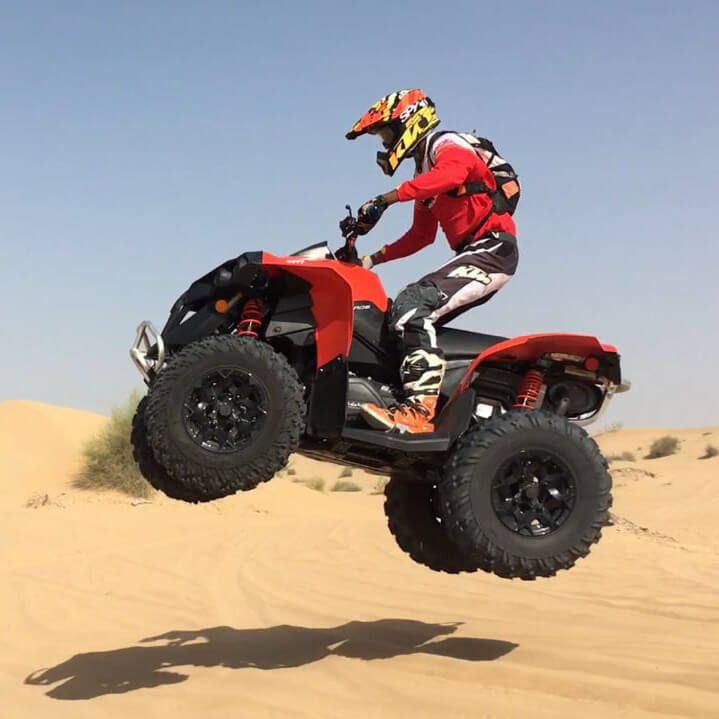 For this reason, disputes may arise.
For this reason, disputes may arise.
ATVs do not interfere with the road for other road users, so you can not prohibit their use in such conditions. At the same time, the driver is obliged to strictly observe the general rules of the road:
If the above rules are observed, there are no dangerous situations and problems in the traffic flow. Drivers may be interested in the question of why it is impossible to ride an ATV around the city if these conditions are not met. Failure to comply with these requirements may result in dangerous situations on the road. They are fraught with serious consequences both for the driver himself and for all other road users. Therefore, it is so important to know how to ride an ATV correctly.
Due to its design features, the ATV is designed for off-road driving.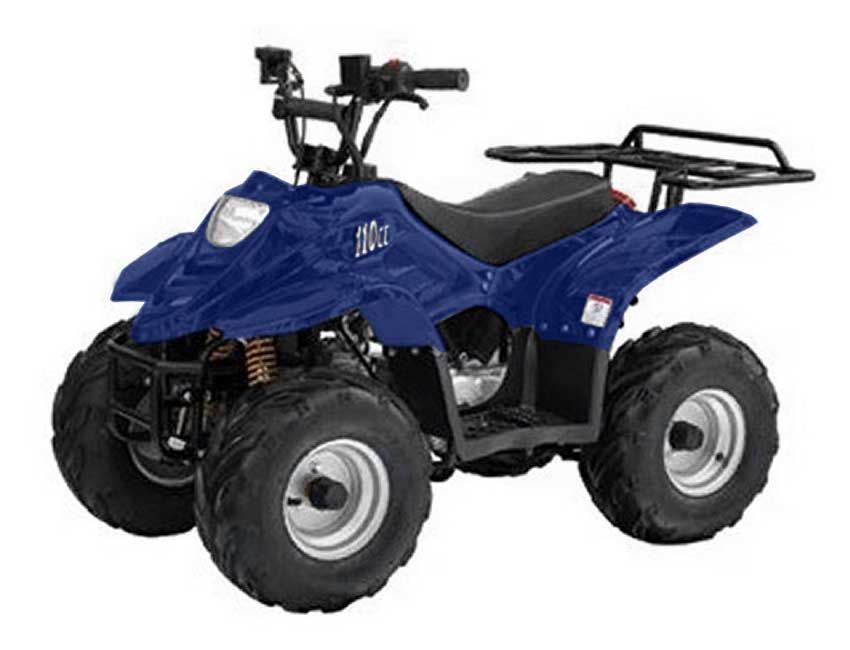 It can be either a hard non-paved road or a hard off-road. Depending on the characteristics of the motorcycle, it can move on the following surfaces:
It can be either a hard non-paved road or a hard off-road. Depending on the characteristics of the motorcycle, it can move on the following surfaces:
In addition, traffic rules do not prohibit the movement of an ATV in the city or highway. There is no article in the administrative code according to which it would be lawful to punish the driver of an ATV for riding under the DOP if he fulfills all the requirements when driving.
The traffic rules stipulate where you can not ride this motorcycle:
According to the law, to drive an ATV, you will need to register it with the Gostekhnadzor authorities and obtain the rights of the appropriate category.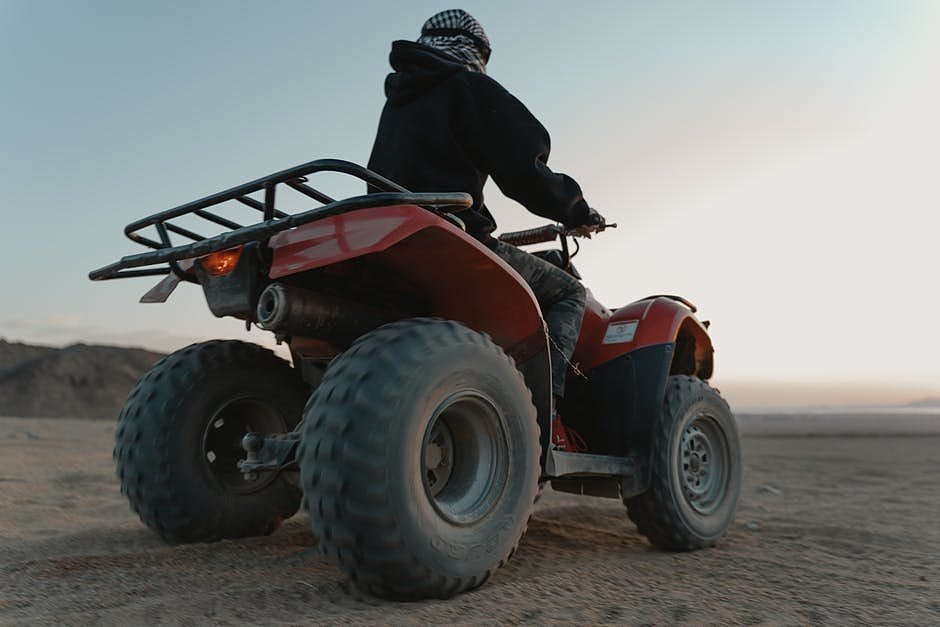 Therefore, when driving on public roads, you need to have:
Therefore, when driving on public roads, you need to have:
You will need to be trained in a driving school and get a tractor driver's license. Next, the vehicle is registered with Gostekhnadzor. After passing the exam, the driver receives the appropriate rights.
Special training will be required to obtain the required documents. The training lasts approximately one year. During this time, the owner of the vehicle takes a course on the safety of driving self-propelled vehicles, studies the theory of traffic rules, and also masters the basic practical skills of driving an ATV.
After obtaining a driver's license category "A1", you need to register an ATV in Gostekhnadzor. To do this, you will need to write an application and collect the appropriate package of documents. After that, the vehicle passes inspection. To safely travel on public roads, you will need to add headlights, turn signals and rear-view mirrors to your ATV. The registration certificate of the self-propelled machine is also issued. After that, you can get an insurance policy.
To safely travel on public roads, you will need to add headlights, turn signals and rear-view mirrors to your ATV. The registration certificate of the self-propelled machine is also issued. After that, you can get an insurance policy.
In the traffic police you will need to register an ATV and get license plates. After fulfilling all legal requirements, you can drive on a public road without hindrance.
So, there are no legal restrictions on driving an ATV on highways or city roads. However, manufacturers of such equipment prohibit this, stipulating this in the instructions. The ATV is designed for off-road driving, all elements of its design are designed taking into account such features of operation. Therefore, it is impossible to drive this vehicle on an asphalt road for a long time. This, firstly, is not convenient enough, and secondly, it is unsafe for motorcycles. It will have to be repaired more often during such operation.
There are road ATVs that are adapted for driving on asphalt.
The quad is moving rather slowly. The maximum speed of many models does not exceed 65-70 km / h. This is more than enough for an extreme ride and an unforgettable experience when driving on a bumpy dirt road. But when moving along the highway, the ATV has a speed limit of 40 km / h. This causes a lot of negative emotions in some car drivers.
The seat, wheels, suspension and other elements of the ATV are designed for driving over rough terrain, overcoming obstacles. If the driver drives on the highway for a long time, it will cause fatigue and even pain. The ATV seat is designed so that the driver periodically rises and rides standing up, overcoming pits and slabs. It is not comfortable enough for prolonged sitting.
Tires have a special tread pattern that allows you to conquer off-road. On hard surfaces, handling is noticeably reduced. Therefore, it should be borne in mind that the legislation does not prohibit riding an ATV on an asphalt road.